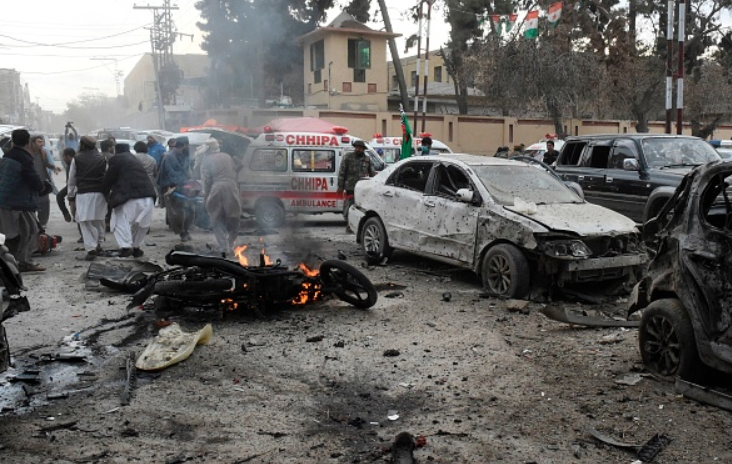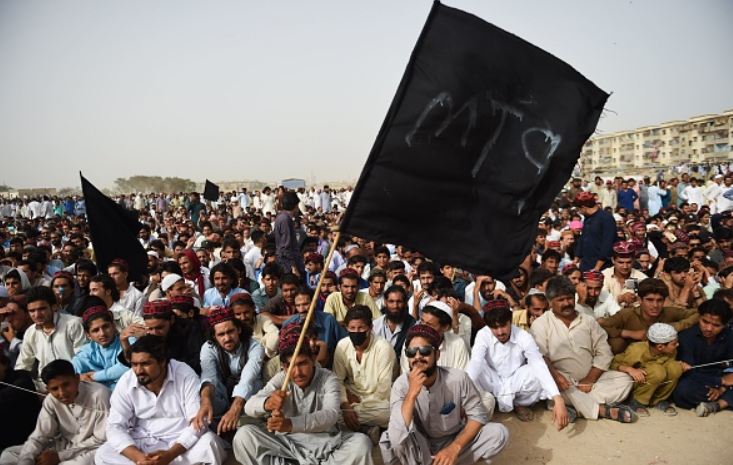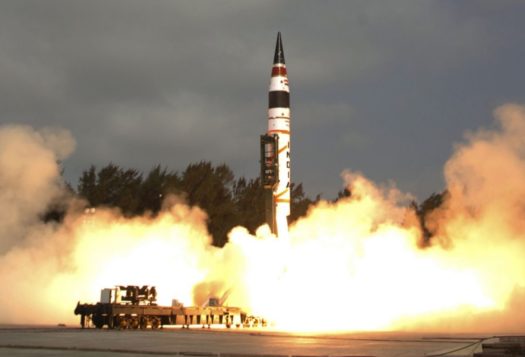
Soon after taking Kabul in August 2021, the Afghan Taliban freed scores of imprisoned Tehreek-e-Taliban (TTP) fighters and senior leadership from Afghanistan’s prisons. The result was an exodus of TTP fighters to Pakistan, particularly the group’s former strongholds in Swat and Dir. While the group had previously formed strongholds in Swat and Dir with the residents’ acquiescence and the support of some malicious individuals, returning TTP fighters were disillusioned by the angst and pushback from residents in Swat and Dir. Likewise, the resurgence of TTP attacks in the region has alarmed the state.
In the months following the Taliban’s comeback to Swat and Dir, Pakistan’s response was weak and slow coming. With the state in denial, non-state organizations such as the Pashtun Tahaffuz Movement (PTM) stepped in to combat the rising terrorist threat. The PTM staged large protests in Khyber Pakhtunkhwa’s major cities, significantly impacting TTP operations and forcing its fighters to vacate Swat and Dir. The fleeing fighters ensconced to the former-FATA region and, from there, launched a deadly campaign against Pakistan. Regardless, the PTM followed TTP fighters to the former-FATA region and proved effective against TTP operations in the region.
The Pakistani state and the PTM should forge an alliance for stronger counterterrorism against the resurgent TTP.
The PTM and the Pakistani state have an acrimonious relationship. While the PTM has criticized the military and accused the state of violating the fundamental human rights of Pashtuns, the military has claimed that the group is a foreign-funded means to sow discontent in Pakistan. Although the Pakistani state and PTM have rarely viewed each other as partners, the TTP terrorist threat may present an area for cooperation. The Pakistani state and the PTM should forge an alliance for stronger counterterrorism against the resurgent TTP. Moreover, a stronger relationship between the PTM and the Pakistani state could address the perceived threat of Pashtun separatism.
Victory of the Afghan Taliban and the TTP Resurgence
The Taliban takeover of Afghanistan directly precipitated the TTP’s resurgence. Under Afghanistan’s previous government, President Ashraf Ghani, with the help of the United States, imprisoned numerous TTP fighters and its senior leadership as part of a collective drive against terrorism. However, the Afghan Taliban’s rise to power resulted in multiple prison breaks across Afghanistan, allowing the TTP members to flee. Having fought alongside the Afghan Taliban against the United States, the Afghan Taliban did not keep their ideological partners locked up.
As enemies of the Pakistani state, the freed TTP fighters regrouped and planned a return to their former strongholds in the tribal areas of Pakistan. The fighters initially returned to Swat and Dir, with the state of Pakistan unaware of this development. However, the uneasiness of residents and the resumption of terrorist attacks in the region awakened the state to the gravity of the situation.
Before this bold and public comeback, some TTP fighters had returned secretly to resume terrorist activities. The group claimed 282 terrorist attacks in 2021 alone, killing 500 Pakistani law enforcement personnel. When the TTP unilaterally ended the ceasefire with Pakistan in November 2022, the TTP launched a deadly terrorist campaign across the country. In 2022, it claimed 89 attacks and has stepped up its terrorist activities since then, including at a Peshawar mosque in January 2023, where 84 individuals were killed and more than a hundred injured.
In addition to kinetic counterterrorism approaches, Pakistan has often held talks with the TTP. Nevertheless, these talks have failed to produce lasting peace in the region. In addition, the TTP has emerged more powerful and violent after every peace talk. After each peace discussion, Pakistan made concessions while the TTP neglected to follow through with their agreements. Pakistan’s past engagements with the TTP were exclusive of other stakeholders, like the PTM, which has deeper local knowledge and popular support in the Pashtun tribal areas. A more inclusive dialogue could have forged a more durable agreement.
The PTM as a Formidable Counterterrorism Group
Since its formation, the Pashtun Tahaffuz Movement has been a formidable resistance force against the TTP. The group was the main organizer of recent peace rallies in the Khyber Pakhtunkhwa province against the returned TTP fighters. These protests effectively drove out the TTP fighters from Swat and Dir because of the residents’ receptivity to the PTM’s message of peace. Having already suffered through the horrors of the earlier Khyber Pakhtunkhwa insurgency, the people of Swat and Dir were motivated to maintain their earned peace.

Moreover, the PTM records many counterterrorism exploits. The group has clashed several times with the Aman (peace) Committee, which it has accused of supporting the Taliban in tribal areas by converting them into a state-backed militia, destabilizing the region. The PTM has already illustrated its motivations and intent to stamp out militancy in the region. It can be a noteworthy partner in Pakistan’s war against militants.
Pakistan’s Disregard for the PTM’s Counterterrorism Ability
For the last two decades, Pakistan has grappled with the issue of terrorism. However, with a dozen military operations conducted against the TTP and its affiliates, including a brief era of relative peace in the ex-FATA regions, the militant group returned last year. In addition, the group has targeted security forces and inflicted heavy casualties.
A working relationship between the Pakistani state and the PTM could resolve misunderstandings and result in mainstreaming the PTM and discontinuing state persecution of its members.
Despite these challenges, the PTM continues to resist the TTP and protest in the tribal areas of Khyber Pakhtunkhwa for peace. These movements are influential counterterrorism efforts against militant groups, which help aid state efforts. The state and the PTM must set aside their differences to create an effective working relationship. For one, the PTM must tone down its aggressive rhetoric toward state institutions, such as blaming the army for the Taliban resurgence. On the other hand, Pakistan should not label the group as a terrorist organization.
Counterterrorism has emerged as an area of convergence for the opposing PTM and Pakistani state. Both sides should harness this shared interest to improve and establish an effective counterterrorism mechanism. Additionally, a working relationship between the Pakistani state and the PTM could resolve misunderstandings and result in mainstreaming the PTM and discontinuing state persecution of its members.
The TTP aims to seize total control in Khyber Pakhtunkhwa by pushing the Pakistani government out of the province while Pakistan appears helpless in the face of a resurgent TTP. In this environment, the PTM is proving itself a powerful counterterrorism force against the TTP. Working together, the Pakistani government and the PTM could effectively combat terrorism in the country and eradicate such insurgent groups completely.
Also Read: Is the Taliban a New Problem for Pakistan?
***
Click here to read this article in Urdu.
Image 1: Banaras Khan/AFP via Getty Images
Image 2: Rizwan Tabassum/AFP via Getty Images


